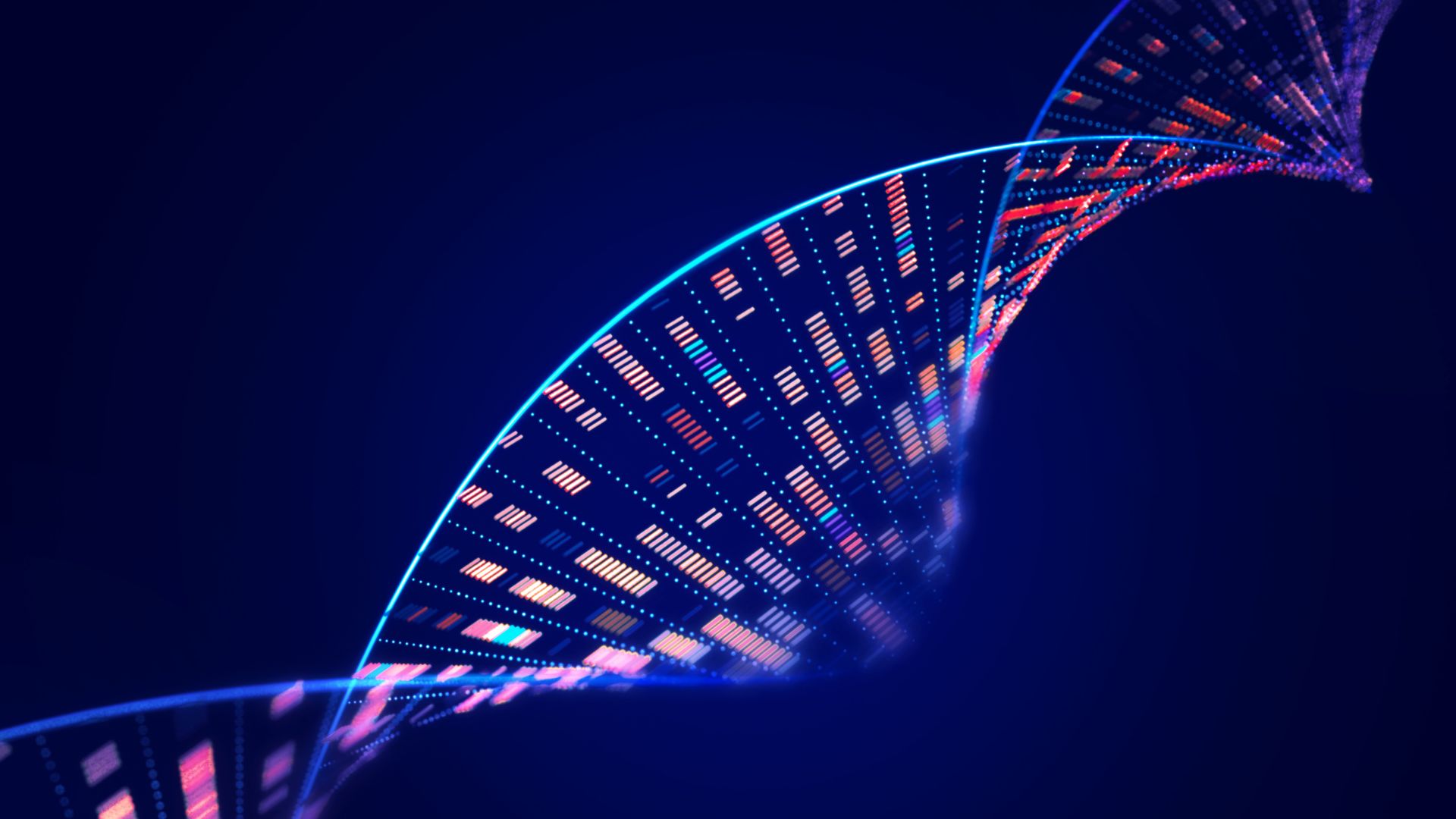Dozens of genes linked to thyroid disease risk in largest study of its kind
112 genes were linked to thyroid conditions in a large genomic study.

In the largest study of its kind, scientists pinpointed more than 100 genes linked to thyroid conditions. The researchers used this genomic data to identify people at high risk of developing thyroid problems and the ages by which their diseases would manifest.
"It substantially advances our understanding of the genetic architecture of thyroid function and thyroid disease," said John Walsh, a clinical professor at the University of Western Australia Medical School, who was not involved in the study. The new research, which has yet to be peer-reviewed, was posted Dec. 22 on the preprint database medRxiv.
The thyroid is a butterfly-shaped organ in the throat that releases hormones essential for controlling how cells turn nutrients and oxygen into energy. People with hyperthyroidism have an overactive thyroid that produces excessively high levels of these hormones. Those with an underactive thyroid, or hypothyroidism, do not produce enough thyroid hormones.
The conditions cause some of the same symptoms, including fatigue and muscle weakness, but differ in distinct ways; for example, hyperthyroidism can cause weight loss and an irregular heartbeat, while hypothyroidism can lead to weight gain and constipation.
Related: Seven possible signs of an underactive thyroid
Factors that raise a person's thyroid disease risk include being more than 60 years old, smoking and not eating enough iodine. And past studies have shown that certain genes predispose people to both autoimmune-driven thyroid disease and other autoimmune conditions, such as type 1 diabetes. But genes that specifically affect thyroid function are less well understood. To gain a better understanding, scientists analyzed the genomes of nearly 250,000 people of European ancestry.
They looked for differences in the genomes of people with different levels of a hormone strongly linked to thyroid conditions, called thyroid-stimulating hormone (TSH). TSH is made by the pituitary gland in the brain and controls the amount of hormones made by the thyroid. In hyperthyroidism, the body attempts to reduce thyroid hormone levels by keeping TSH levels low, but the organ continues to churn out hormones anyway. In hypothyroidism, the brain produces high levels of TSH in order to hike up thyroid hormone levels, but the thyroid fails to make enough hormones in response.
Sign up for the Live Science daily newsletter now
Get the world’s most fascinating discoveries delivered straight to your inbox.
In their analysis, scientists pinpointed 112 genes that may affect TSH levels and therefore, people's thyroid disease risk. Of these 112 genes, 78 had never been linked to TSH levels before.
Some of the genes newly linked to TSH levels are involved in blood vessel growth and the survival of nerve cells. Further work will be needed to understand exactly how these processes contribute to thyroid disease. "The hope is that by better understanding how thyroid disease develops, new therapeutic targets will be identified," Walsh said.
Uncovering how genetics influence thyroid disease risk could also allow doctors to predict who is most at risk of developing the conditions. This could enable those at high risk to better manage their lifestyle to reduce their odds of disease, for example, by avoiding smoking, reducing alcohol intake or eating iodine-rich foods.
To test this idea, the researchers used their new understanding of TSH-related genes to predict people's risk of hyperthyroidism and hypothyroidism. They generated "risk scores" for hundreds of people with European ancestry, some of whom had the thyroid conditions. By comparing people's risk scores with actual cases of thyroid conditions, the team found their risk scores fairly accurately predicted people's chance of disease.
These scores reflected a sliding scale of risk, where people with the highest scores were more likely to have hypothyroidism and those with the lowest scores were more likely to have hyperthyroidism. That's not to say that someone with a low score can't develop hypothyroidism; they just have a slimmer chance than someone with a high score.
Specifically, the study revealed that nearly 18% of people with the top 10% of scores had developed hypothyroidism by age 80, compared with just 5% for those with the lowest 10% of scores. The reverse trend was seen for hyperthyroidism: Nearly 4% of people with the lowest 10% of scores developed hyperthyroidism by age 80 compared with just 1% of those with the top 10% of scores.
The risk scores could also predict when people were likely to develop thyroid conditions. For example, people with the very highest scores typically developed hypothyroidism by age 51, while those with the lowest scores who did develop the condition didn't do so until age 75.
One limitation of the study is that these risk scores were made for people whose genomic data contributed to the initial dataset used to pinpoint TSH-related genes. Ideally, the risk scores would be tested on an independent sample of people. To this end, the scientists later tested the risk scores on an independent group of people and found they worked similarly well; those data will be published soon.
While such risk scores could prompt those at high risk to make beneficial lifestyle changes, it is unlikely that genetic tests will replace current diagnostic tools. "Screening for thyroid disease with a TSH measurement is cheap and easy, it's hard to imagine genetic profiling will displace that," Walsh told Live Science.
Scientists must also study more diverse ancestries to prevent such genetic tests widening health inequalities. "Understanding the genetic architecture of thyroid diseases within and across ancestries requires larger sample sizes in non-European ancestries," the team wrote in their paper.

Carissa Wong is a freelance reporter who holds a PhD in cancer immunology from Cardiff University, in collaboration with the University of Bristol. She was formerly a staff writer at New Scientist magazine covering health, environment, technology, nature and ancient life, and has also written for MailOnline.










